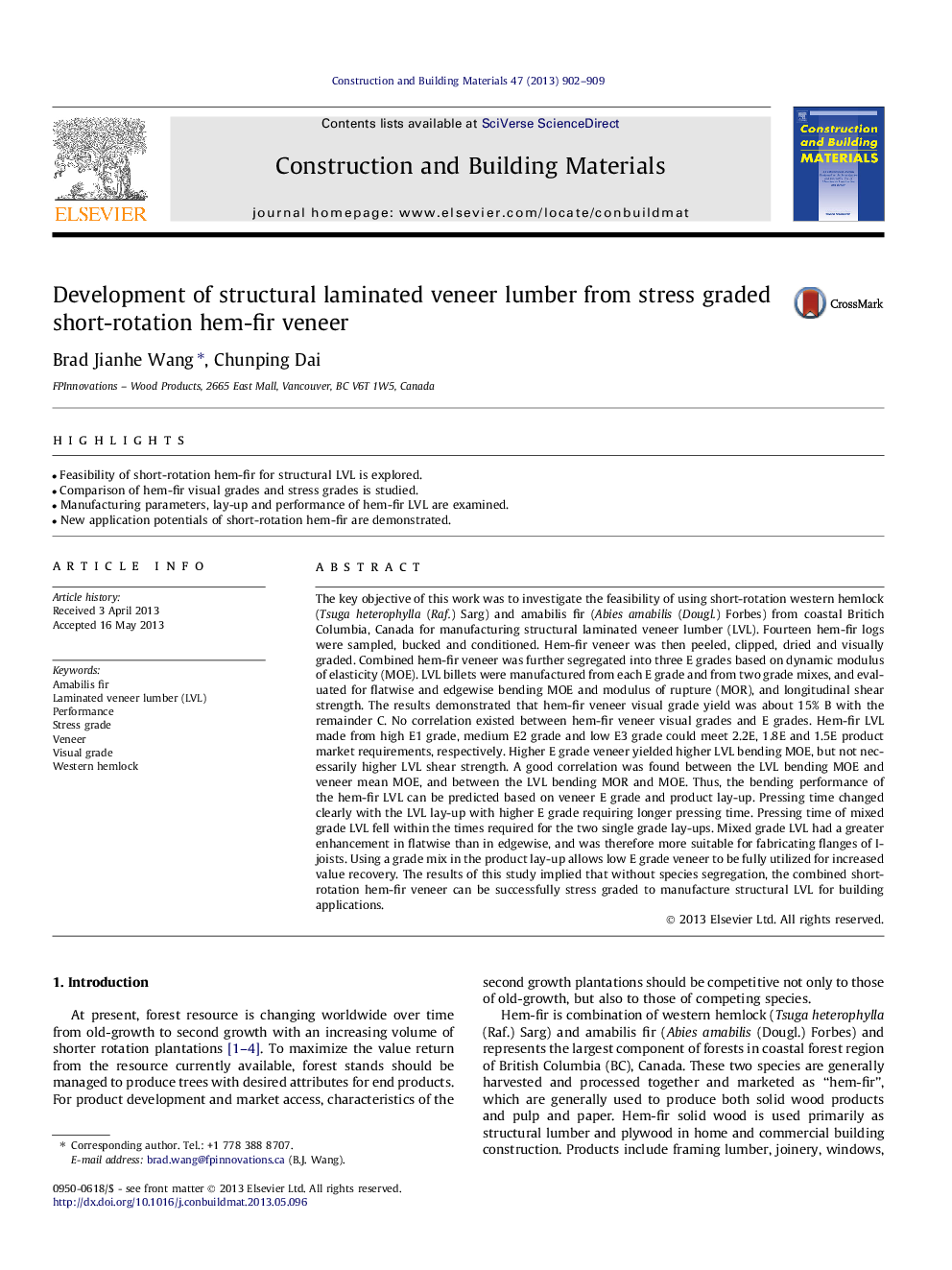| Article ID | Journal | Published Year | Pages | File Type |
|---|---|---|---|---|
| 6725895 | Construction and Building Materials | 2013 | 8 Pages |
Abstract
The key objective of this work was to investigate the feasibility of using short-rotation western hemlock (Tsuga heterophylla (Raf.) Sarg) and amabilis fir (Abies amabilis (Dougl.) Forbes) from coastal Britich Columbia, Canada for manufacturing structural laminated veneer lumber (LVL). Fourteen hem-fir logs were sampled, bucked and conditioned. Hem-fir veneer was then peeled, clipped, dried and visually graded. Combined hem-fir veneer was further segregated into three E grades based on dynamic modulus of elasticity (MOE). LVL billets were manufactured from each E grade and from two grade mixes, and evaluated for flatwise and edgewise bending MOE and modulus of rupture (MOR), and longitudinal shear strength. The results demonstrated that hem-fir veneer visual grade yield was about 15% B with the remainder C. No correlation existed between hem-fir veneer visual grades and E grades. Hem-fir LVL made from high E1 grade, medium E2 grade and low E3 grade could meet 2.2E, 1.8E and 1.5E product market requirements, respectively. Higher E grade veneer yielded higher LVL bending MOE, but not necessarily higher LVL shear strength. A good correlation was found between the LVL bending MOE and veneer mean MOE, and between the LVL bending MOR and MOE. Thus, the bending performance of the hem-fir LVL can be predicted based on veneer E grade and product lay-up. Pressing time changed clearly with the LVL lay-up with higher E grade requiring longer pressing time. Pressing time of mixed grade LVL fell within the times required for the two single grade lay-ups. Mixed grade LVL had a greater enhancement in flatwise than in edgewise, and was therefore more suitable for fabricating flanges of I-joists. Using a grade mix in the product lay-up allows low E grade veneer to be fully utilized for increased value recovery. The results of this study implied that without species segregation, the combined short-rotation hem-fir veneer can be successfully stress graded to manufacture structural LVL for building applications.
Related Topics
Physical Sciences and Engineering
Engineering
Civil and Structural Engineering
Authors
Brad Jianhe Wang, Chunping Dai,
